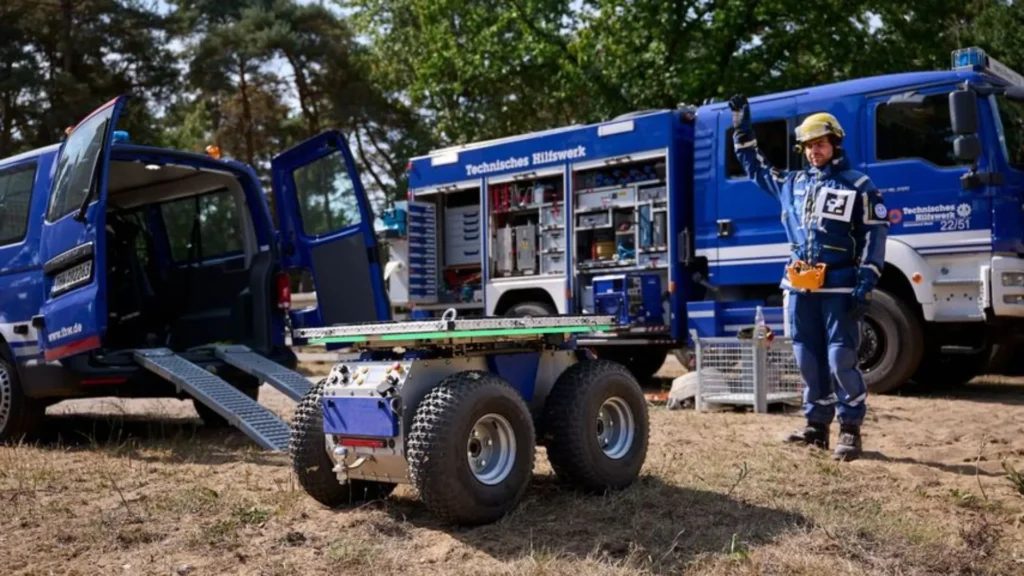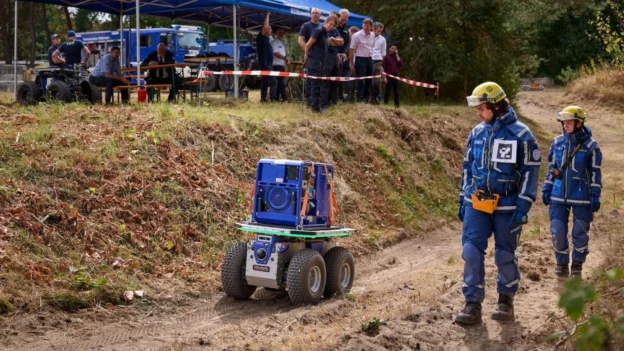When the terrain is unstable and every minute counts, reliable technological support can make all the difference. In Germany, the ROMATRIS project has successfully concluded after four years of collaborative work between the German Research Centre for Artificial Intelligence (DFKI) and the Federal Agency for Technical Aid (THW). The result: a semi-autonomous AI robot with advanced navigation and gesture control capabilities, specifically designed for logistics tasks in critical situations.
AI robot designed to operate where vehicles cannot reach
The new robot’s mission is to facilitate the transport of heavy loads in locations where conventional vehicles and stretchers cannot operate. Equipped with 3D sensors, depth cameras, and an AI system that recognizes human gestures, the ROMATRIS can move precisely between defined points , follow the operator, or be controlled manually.
Its 150-kilogram load capacity makes it an ideal ally for moving generators, pumps, and other essential equipment.
Direct collaboration with rescuers
One of the highlights of the development was the constant involvement of THW volunteers in the design and testing process. Through workshops and simulations under real-life conditions, the technical team

The system operates in three modes: gesture-based operator tracking, autonomous shuttle movement, and traditional remote control.
Thanks to its ultrasonic and laser sensors, it can detect and avoid obstacles in changing environments. The interface has been designed to require minimal training, facilitating rapid adoption in critical moments.
Operational efficiency for civil protection
ROMATRIS has been validated in THW training centers and has proven its effectiveness in multiple field trials. Its implementation aims to reduce the physical burden on rescuers and increase safety in logistics operations. It also sets a precedent for the use of intelligent robots in crisis support tasks .
For the DFKI and the THW, this innovation is a strategic step toward more efficient, safer, and more adaptable civil protection, meeting the challenges of the future.
Source and photo: German Research Center for Artificial Intelligence

